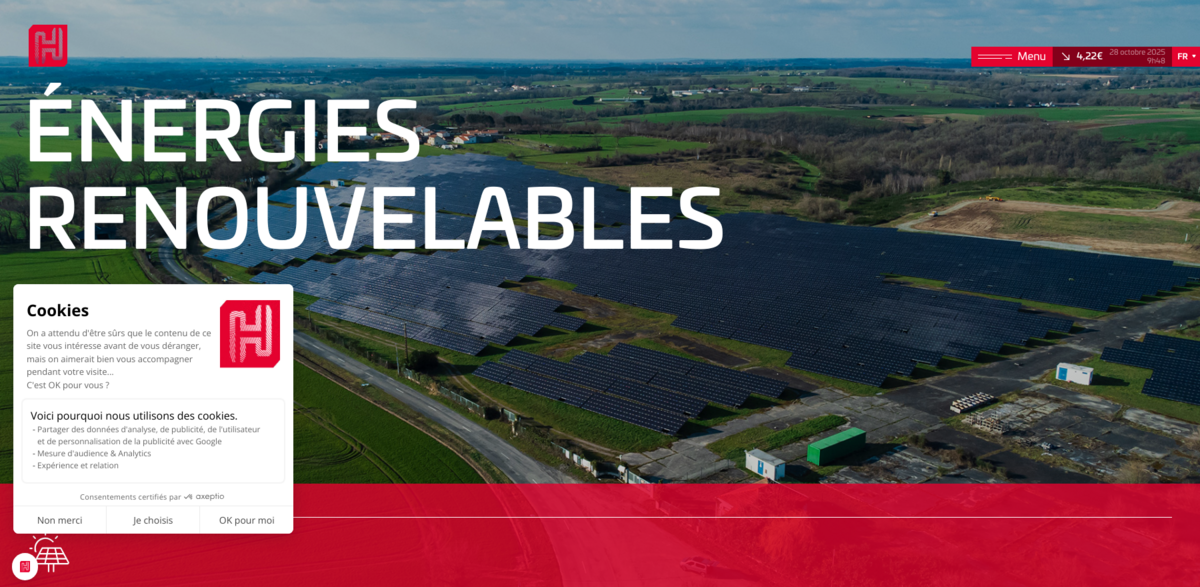Revolutionizing Renewable Energy Projects with Decarbonized Cement
Renewable energy is all about building a greener future, but even these projects have a carbon footprint that needs tackling. Enter Hoffmann Green, a true pioneer in decarbonized cement technology. On the wind farm construction site at Plaine des Moulins in Jazeneuil (86), Hoffmann Green’s cement made a world-first impact—cutting CO2 emissions by 33 tons, which is a whopping 32% reduction compared to traditional cement. And guess what? This was achieved without changing a single construction method. Pretty impressive, right?
Main Benefits of Hoffmann Green’s Decarbonized Cement
Here’s why this innovation matters:
- 33 tons of CO2 saved on a single wind farm project
- 32% reduction in carbon emissions compared to traditional cement
- 0% clinker content, making it the only cement of its kind under ATEx case A
- Emissions below 200 kg of CO2 per ton—already hitting 2050 industry targets
- Supports circular economy through its unique manufacturing process
- Applicable to foundations of wind turbines (offshore and onshore) and photovoltaic installations
Projects Across France: Foundations for a Sustainable Future
Hoffmann Green’s decarbonized cement isn’t just a one-off success. It’s powering multiple renewable energy projects across France. For photovoltaic centers, Eiffage Énergie Systèmes is a key client, with projects in Gétigné (44). When it comes to wind turbines, several collaborations stand out: Fondéole teamed up with BPE Marius Wasilewski in Vermandovillers (80), and with POINT.P – SGDB France in Neuvillalais (72). Meanwhile, Bio Build and Valrea worked with Lépine TP in Jazeneuil (86). And let’s not forget the foundations for H2 trackers in Bournezeau (85), where Hoffmann Green partnered with Oliveau masonry. Solar farms also benefit, with TP Vincent and Eiffage Énergie collaborating in Lezay (79).
Decarbonized Cement: A Game-Changer for the Construction Industry
What makes Hoffmann Green’s cement stand out? It’s the world’s first and only 0% clinker decarbonized cement. This means no clinker—a major source of CO2 emissions in traditional cement—is used at all. The manufacturing process is designed to promote circular economy principles, reducing waste and maximizing resource efficiency. The result? Cement with a carbon footprint so low, it already meets the cement industry’s 2050 CO2 emission targets. This is a huge leap forward for sustainable construction.
Driving the Ecological Transition Forward
Reducing the carbon footprint of renewable energy projects isn’t just good for the planet—it’s essential for the sector’s image and the broader ecological transition. Hoffmann Green’s innovation helps construction stakeholders slash their carbon emissions by up to five times compared to traditional methods. This means building sustainable cities of tomorrow isn’t just a dream—it’s becoming reality, one foundation at a time.
Project Impact on Sustainable Development Goals (SDGs)
- SDG 7: Affordable and Clean Energy – by supporting renewable energy infrastructure
- SDG 9: Industry, Innovation, and Infrastructure – through innovative cement technology
- SDG 11: Sustainable Cities and Communities – enabling low-carbon construction
- SDG 12: Responsible Consumption and Production – promoting circular economy in cement manufacturing
- SDG 13: Climate Action – significantly reducing CO2 emissions in construction
Looking Ahead: Cementing a Low-Carbon Future
Hoffmann Green’s breakthrough in decarbonized cement is more than just a product—it’s a movement toward a cleaner, more sustainable construction industry. By drastically cutting emissions without compromising on performance or construction methods, this technology is setting new standards. As renewable energy projects continue to expand, the role of such innovative materials will only grow, helping to build a future where sustainability and progress go hand in hand.





















